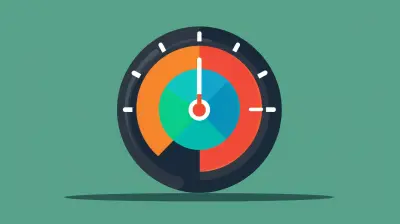The Importance of Quarterly Estimated Taxes for Business Owners
7 July 2025
If you're a business owner, taxes aren't just a once-a-year headache—they're a year-round commitment. One of the most overlooked (and sometimes feared) parts of running your own business is managing quarterly estimated taxes.
Yep, that's right. Uncle Sam doesn't like to wait until April 15th to get his slice.
So what’s the deal with quarterly estimated taxes? Why should you care? And how can you stay on top of them without feeling like you're drowning in paperwork and anxiety?
This guide is here to break it all down in plain English, with all the info you need to stay in the IRS’s good graces and avoid nasty surprises.
What Are Quarterly Estimated Taxes?
Let’s start with the basics.Quarterly estimated taxes are payments you make to the IRS four times a year to cover your income tax burden. They're not just for corporations. If you're self-employed, a freelancer, or a small business owner, you're basically required to pay estimated taxes if you expect to owe at least $1,000 come tax season.
Unlike employees who have taxes automatically taken out of each paycheck, business owners don’t have that luxury. You're responsible for calculating and paying your own taxes.
Who Needs to Pay?
Here’s a quick rule of thumb:- Did you make money this year (beyond just wages)?
- Are taxes not being withheld from that income?
- Do you expect to owe at least $1,000 when you file?
If you said yes to any of those, quarterly estimated taxes are calling your name.
This includes:
- Freelancers and independent contractors
- Sole proprietors
- Partners in partnerships
- S corporation shareholders
- LLC members (depending on taxation status)
Even if you have a side hustle on Etsy or drive for Uber part-time, those earnings may put you in estimated tax territory.
Why Quarterly Estimated Taxes Matter
Let’s be honest—taxes aren’t fun. But ignoring them? That’s even worse.Staying on top of quarterly estimated taxes isn’t just about checking a box. It’s about:
- Avoiding penalties
- Smoothing your cash flow
- Gaining peace of mind
1. Avoiding IRS Penalties
Here's the scary truth: If you don’t pay enough tax throughout the year, the IRS can ding you with an underpayment penalty—even if you pay the full amount by April 15.Think of it like this: the IRS wants its money in real-time. If you wait too long, they treat it like you’re late. Kind of like paying your rent months after it was due.
Taking quarterly taxes seriously can keep you out of hot water and avoid unnecessary fees that eat into your profits.
2. Better Cash Flow Management
Paying taxes quarterly forces you to stay in tune with your business’s financial health. Instead of getting slammed with a massive bill once a year, you’re spreading it out.It’s a bit like paying off your credit card each month rather than letting interest build up. You’ll sleep better at night knowing the taxman isn’t lurking with a hefty surprise.
3. Peace of Mind
Let’s face it—tax stress is real. But when you plan ahead and tackle your quarterly taxes, you take control. That peace of mind? Totally worth it.
When Are Quarterly Taxes Due?
Don’t worry, you don’t have to pay every three months on the dot. The IRS divides the year into four payment periods:- 1st Quarter: Jan 1 – Mar 31 → Due April 15
- 2nd Quarter: Apr 1 – May 31 → Due June 15
- 3rd Quarter: Jun 1 – Aug 31 → Due Sept 15
- 4th Quarter: Sep 1 – Dec 31 → Due Jan 15 (following year)
Mark your calendar. Set reminders. Tattoo it on your arm (okay, maybe not that far). Just don’t forget these dates.
If the due date falls on a weekend or holiday, the IRS gives you until the next business day.
How to Calculate Your Estimated Taxes
This is where most people start sweating—numbers, forms, the whole nine yards.But hang in there. You’ve got options, and it’s not as scary as it looks.
Step 1: Estimate Your Income
Start with your expected income for the year. That means all self-employed income, business revenue, side hustles—anything where taxes aren’t automatically withheld.If you’ve been in business for a while, use last year as a guide and adjust based on how things are going.
Step 2: Subtract Expenses
Now subtract all your allowable business expenses and deductions. This includes:- Office supplies
- Website hosting
- Business travel
- Equipment
- Home office deduction (if applicable)
Step 3: Apply Tax Rates
After figuring out your net income, apply the appropriate tax rate. Most self-employed folks must pay:- Income Tax (depends on your tax bracket)
- Self-Employment Tax (currently 15.3%)
Don't forget to include any state income tax if applicable.
Step 4: Divide By Four
Take your total estimated yearly tax bill and divide it into four equal payments. Boom—that’s your quarterly payment.Of course, if your income isn’t steady (hello, freelance life), you might need to adjust each quarter based on what you actually earned.
Tip: Use the IRS Form 1040-ES
It includes worksheets, instructions, and even payment vouchers if you want to file by mail (though paying online is so much easier).How to Pay Quarterly Taxes
You’ve got several easy ways to pay:- IRS Direct Pay: Fast, free, and secure.
- Electronic Federal Tax Payment System (EFTPS): Great for business owners who make multiple payments.
- IRS2Go App: Yup, there's an app for that.
- Mail a Check: Old school, but still works.
Pick your poison, just make sure it’s on time.
What If You Overpay or Underpay?
Life’s unpredictable, and so is business income. No worries—stuff happens.Overpaying
If you end up overpaying, the IRS will issue a refund when you file your return. It’s like a little tax-time bonus—woohoo!Underpaying
If you underpay, you may owe both the balance and a penalty. To avoid this:- Try to pay at least 100% of last year’s tax liability (110% if you made over $150k).
- Or, make payments based on accurate quarterly income using the annualized income method.
Planning Tips for Business Owners
Whether you're a solopreneur or running a growing company, here are a few tips to stay ahead of the game.1. Set Aside Funds Regularly
Treat taxes like a business expense. Open a separate savings account and transfer a percentage of every payment you receive—say 25-30%. That way, when tax time rolls around, the money’s already there.2. Use Accounting Software
QuickBooks, FreshBooks, Wave—there are tons of tools out there that make tracking income and estimating taxes a breeze. Many even send reminders for payment due dates.3. Work With a Tax Professional
You don’t have to go it alone. A good CPA or tax pro can help you:- Calculate accurate payments
- Maximize deductions
- Avoid red flags
Sure, it costs a little upfront, but it can save you way more in the long run.
4. Review Quarterly Performance
Each quarter is a chance to check in on your business. Are profits up? Down? Adjust your estimated payments as needed and stay agile.Common Mistakes to Avoid
It’s easy to slip up, especially when you’re juggling a million things as a business owner. Watch out for these traps:- Skipping payments: Even one missed payment can trigger a penalty.
- Forgetting state taxes: Many states require their own estimated tax payments.
- Undervaluing income: It’s tempting to round down, but the IRS sees that as underpayment.
- Not adjusting for income changes: If you hit a big financial milestone, your taxes go up too.
Final Thoughts
Quarterly estimated taxes might not be glamorous, but they’re a key part of running a smart, successful business. Think of them as the regular oil changes that keep your financial engine running smoothly.When you stay ahead, plan for them, and build them into your cash flow, you’re not just avoiding penalties—you’re creating a stress-free system that helps your business thrive.
So don’t wait until tax season to think about taxes. Make them a part of your business routine. Your future self (and your bank account) will thank you.
all images in this post were generated using AI tools
Category:
Tax PlanningAuthor:

Zavier Larsen
Discussion
rate this article
2 comments
Carla McMaster
Quarterly estimated taxes are essential for business owners, ensuring compliance and preventing year-end financial surprises. By proactively managing tax obligations, entrepreneurs can maintain cash flow, make informed decisions, and ultimately contribute to the long-term sustainability of their businesses. Stay ahead!
November 16, 2025 at 3:25 AM

Zavier Larsen
Thank you for your insightful comment! You're absolutely right—quarterly estimated taxes are crucial for financial planning and business sustainability. Staying proactive is key to success!
Astraea Tucker
Great insights! Understanding quarterly estimated taxes is essential for every business owner's success.
July 19, 2025 at 11:46 AM

Zavier Larsen
Thank you! I'm glad you found the insights valuable. Understanding quarterly estimated taxes truly is crucial for business success.


